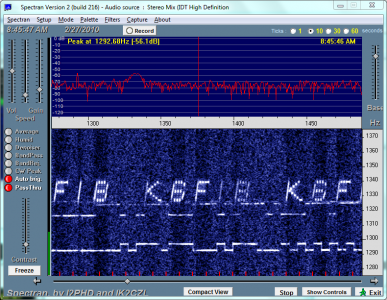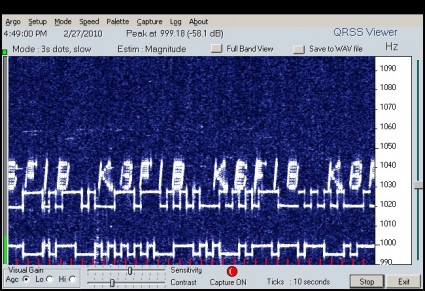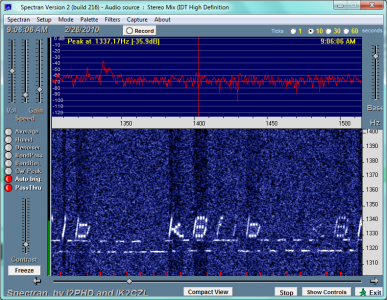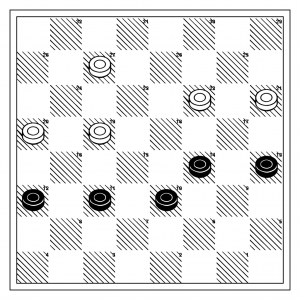A visit to Powell’s books today netted me three new (well, new to me, but used, and in two cases, quite old) books on checkers. It’s been a while since I mentioned my checkers program milhouse, but it’s still in the back of my mind, and these old books provide excellent insight into the game, and are rich in test cases that can be used to evaluate checkers play. For instance, in Spayth’s American Draught Player, he lists a number of nice positions, like this position, labelled Payne’s #1:
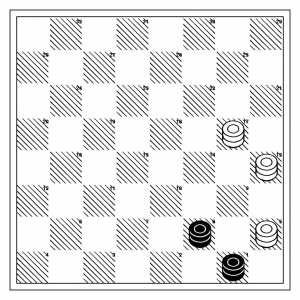
Either side to play, white to win...
Milhouse has no difficulty finding the winning line on simple positions like this, but there are definitely some more subtle positions, and Spayth’s book provides some insight into many common openings. I’ll probably type in some of these problems, and eventually produce a downloadable version of milhouse for all to enjoy.
Addendum: Here’s the most interesting book: a copy of Spayth’s The American Draughts Player, which was written circa 1860. I’m not sure when this edition was printed, but it’s obviously quite old, and yet in pretty good condition.

Spayth's American Draught Player
For those of you who weren’t lucky enough to find a copy of this book, you can nevertheless find it on Google Books:
Addendum2: My copy is a sixth edition, which means that it probably dates to the mid 1890s.
